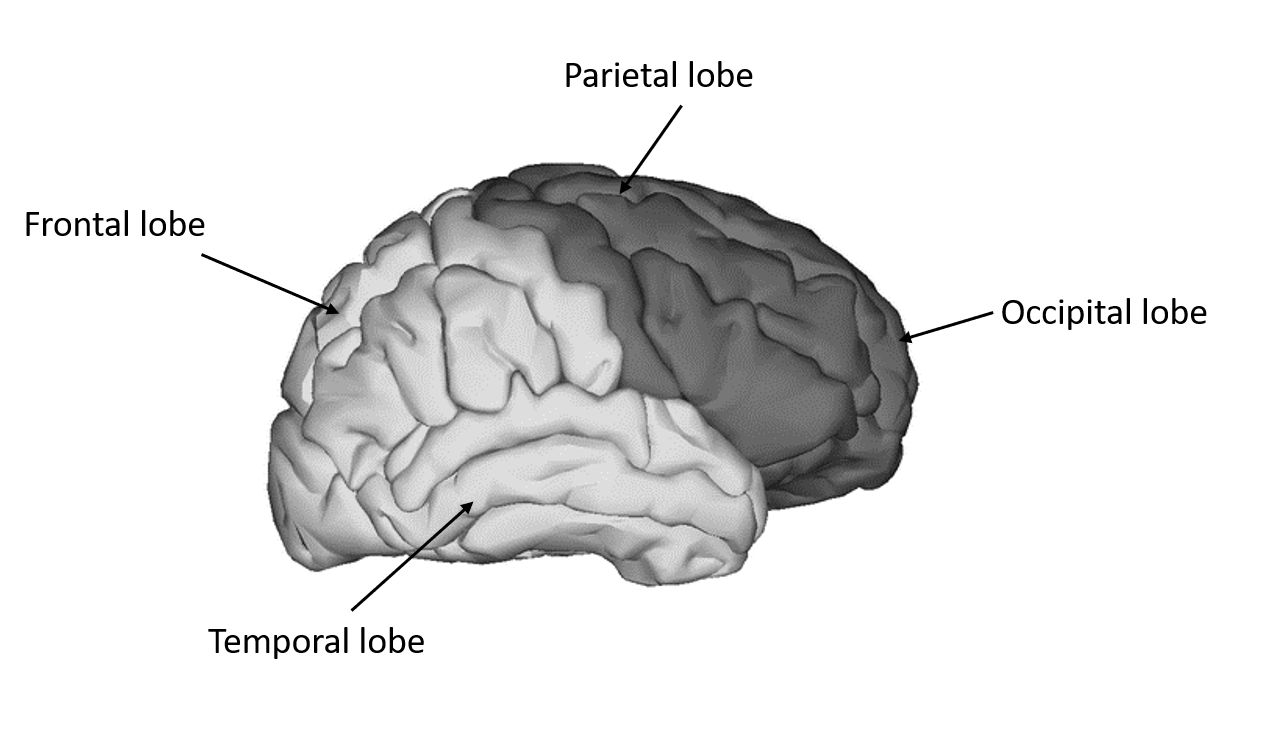
Somaesthetic area lies in
(a) Frontal lobe
(b) Temporal lobe
(c) Parietal lobe
(d) Occipital lobe
Answer
478.8k+ views
Hint: The love has postcentral sulcus with the posterior boundary of the somatosensory cortex and the posterior zone with the remaining areas has a posterior parietal cortex. The lobe is divided into visual processing sulcus.
Complete answer:
The sensory area in the brain has four areas: primary sensory area, secondary sensory area, sensory association area, and higher association areas. The primary sensory areas are divided into three major parts: somesthetic area, visual area, and auditory area. The somesthetic area is further divided into two primary and secondary areas. The primary somesthetic area localizes, analyses, and discriminates in different modalities of cutaneous senses like touch, pressure, position, and vibration senses. The secondary somesthetic area receives pain sensation and other modalities of cutaneous sensation. The Somesthitic association area occupies the superior parietal lobule and extends onto the medical surface of Brodmann areas 5 and 7.

- The parietal cortex is considered as one of the most complex regions of the human brain which is responsible for the integration of various stimuli.
- The parietal cortex receives, correlates, analyze primary sensory information to interpret stimulus and aid in discrimination and recognition.
- The parietal lobes are subdivided into the postcentral sulcus and intraparietal sulcus.
- Boundaries of the parietal lobe
Dorsally by the cingulate gyrus
Posterior border: Parieto- Occipital sulcus
Anterior border: Central Fissure
Ventral border: Sylvian Fissure
So, the correct answer is, ‘(c) Parietal lobe.’
Note:
- Parietal lobe syndrome in the dominant hemisphere consists of two syndrome apraxias and Gerstmann’s syndrome.
- Apraxias is the inability to carry out an action in response to verbal command in the absence of problems with comparison, impairment of motor function.
- Gerstmann’s syndrome causes impaired calculation, left- right confusion, finger agnosia, dysgraphia.
Complete answer:
The sensory area in the brain has four areas: primary sensory area, secondary sensory area, sensory association area, and higher association areas. The primary sensory areas are divided into three major parts: somesthetic area, visual area, and auditory area. The somesthetic area is further divided into two primary and secondary areas. The primary somesthetic area localizes, analyses, and discriminates in different modalities of cutaneous senses like touch, pressure, position, and vibration senses. The secondary somesthetic area receives pain sensation and other modalities of cutaneous sensation. The Somesthitic association area occupies the superior parietal lobule and extends onto the medical surface of Brodmann areas 5 and 7.

- The parietal cortex is considered as one of the most complex regions of the human brain which is responsible for the integration of various stimuli.
- The parietal cortex receives, correlates, analyze primary sensory information to interpret stimulus and aid in discrimination and recognition.
- The parietal lobes are subdivided into the postcentral sulcus and intraparietal sulcus.
- Boundaries of the parietal lobe
Dorsally by the cingulate gyrus
Posterior border: Parieto- Occipital sulcus
Anterior border: Central Fissure
Ventral border: Sylvian Fissure
So, the correct answer is, ‘(c) Parietal lobe.’
Note:
- Parietal lobe syndrome in the dominant hemisphere consists of two syndrome apraxias and Gerstmann’s syndrome.
- Apraxias is the inability to carry out an action in response to verbal command in the absence of problems with comparison, impairment of motor function.
- Gerstmann’s syndrome causes impaired calculation, left- right confusion, finger agnosia, dysgraphia.
Recently Updated Pages
Master Class 11 Accountancy: Engaging Questions & Answers for Success

Glucose when reduced with HI and red Phosphorus gives class 11 chemistry CBSE

The highest possible oxidation states of Uranium and class 11 chemistry CBSE

Find the value of x if the mode of the following data class 11 maths CBSE

Which of the following can be used in the Friedel Crafts class 11 chemistry CBSE

A sphere of mass 40 kg is attracted by a second sphere class 11 physics CBSE

Trending doubts
10 examples of friction in our daily life

Difference Between Prokaryotic Cells and Eukaryotic Cells

State and prove Bernoullis theorem class 11 physics CBSE

What organs are located on the left side of your body class 11 biology CBSE

Define least count of vernier callipers How do you class 11 physics CBSE

The combining capacity of an element is known as i class 11 chemistry CBSE




